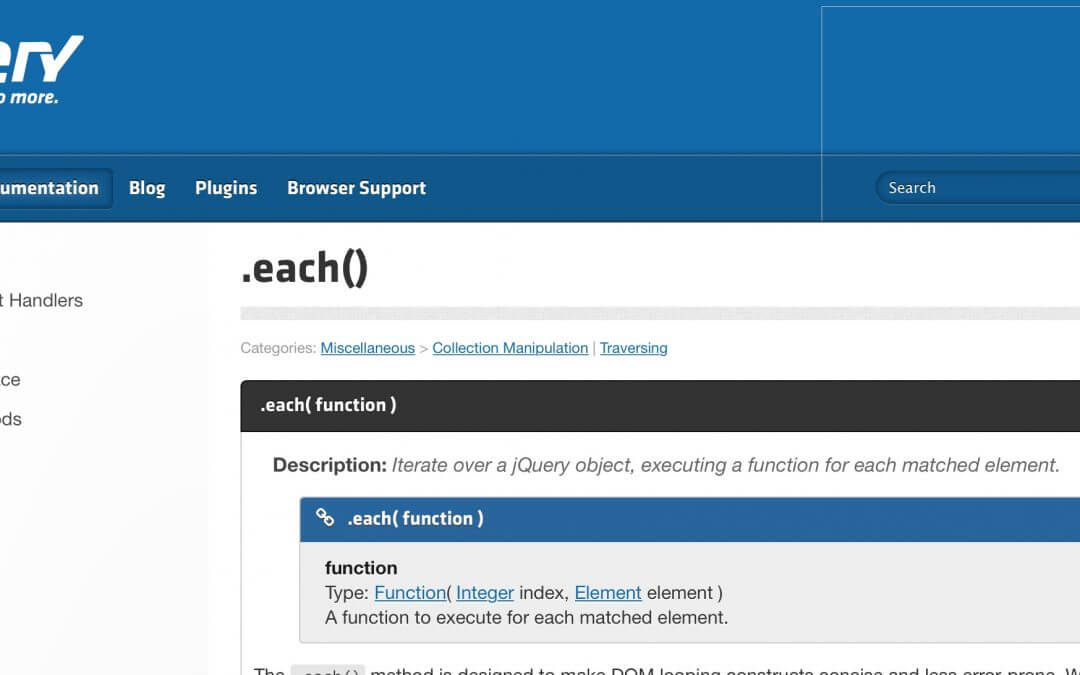Hi everyone, last week we focused on a newer Javascript library, React. However, for this week we want to come back for a moment on the great power of another – and surely more known – library: jQuery and two of its useful methods. We will see, then, also a Javascript function.
TWO USEFUL jQUERY METHODS AND A JS ONE
A couple of weeks ago we focused on jQuery .find, .text and .before methods and how to recreate our Divi Ad system on Blog page using these ones and Bloom. Today we want to deepen a little jQuery .each, .append and Javascript .replace.
So, let’s get started!
.each
The ‘.each’ jQuery method is among the most used; it simply iterate over a jQuery object, running a callback function every time it iterates.
The classic example is that one of a list (<li>) through which we want to iterate executing a specific function, maybe simply adding a class to it or indexing it (the index will begin from 0). So Php or Javascript speaking it is a similar approach to a ‘for… loop’: until a matching element is found execute the function ‘x’ and pass to the next one.
However the jQuery documentation recommends to use this method carefully because many jQuery methods already iterate the matched elements: so for example adding a class to an element targeted by ‘.target’ class with jQuery ‘.addClass’ method automatically will iterate all the ‘.target’ elements and apply to all them (we speak about “implicit iteration” in this case).
Here comes the nice of the .each method. It give us a context to which will apply our callback functions and inside of it we can use the keyword ‘this’ to refer to our specific element. We will se in the next Friday post how this detail will be crucial for our purposes.
NOTE that ‘.each()’ method is something different from the ‘$.each()’ one: the latter one, in fact, will iterate both objects and arrays and the callback is passed an index-value (if array) or key-value (if object) pair each time.
.append
In our previous jQuery-focused post we talked about .before that adds some html elements right before, in the Dom tree, the element selected. Here we give a look at a similar method that adds it after (look at the related .prepend for adding before); however, the major difference is that the .append() method adds the html you want as the last child of the element matched by selector, so, definitely, still inside of it.
As you can see the syntax is very simple. The .appendTo() method is exactly the same except that it invert the element order in the syntax.
NOTE that such as for the .before() method it accepts passing multiple arguments as input.
.replace
Finally we have the Javascript .replace() (not jQuery!) method. It takes a string pattern, replace a part of it according to your instructions and return a new string. The initial pattern can be either a RegExp or a string while the replacement can be a string or a function.
IN THE FRIDAY POST
In the next post, on Friday, we will see how we used these three jQuery methods fo getting the result you can see also above in this post: a blue button appended to our jQuery method titles (.each, .append and .replace) that automatically grab the title and redirect to the correct jQuery documentation page.
See you next post!









